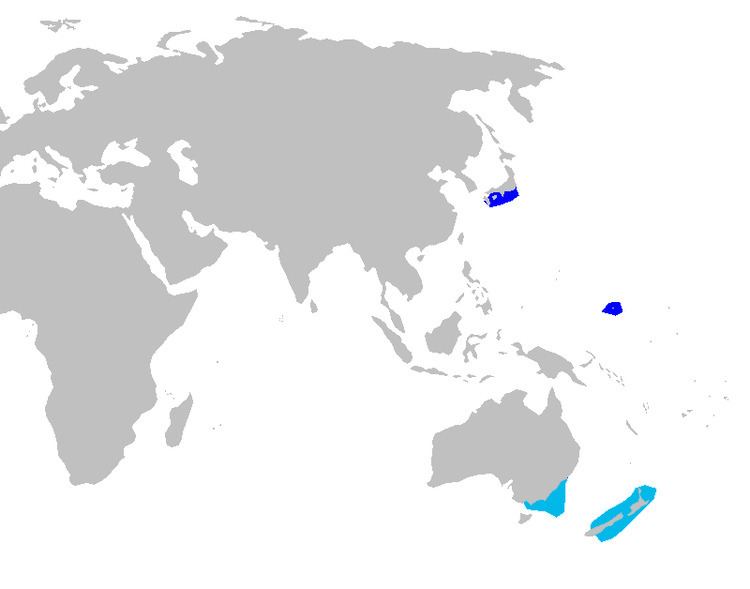Kingdom Animalia Class Chondrichthyes Order Squaliformes | Phylum Chordata Subclass Elasmobranchii Family Squalidae | |
 | ||
Cirrhigaleus australis, also known as the Southern Mandarin Dogfish, is a species of Mandarin dogfish shark in the genus Cirrhigaleus. It was distinguished from Cirrhigaleus barbifer, which lives in the North Pacific, on an expedition in the coral reefs near Australia in 2007. It is now known to live in the temperate waters east of Australia and possibly around New Zealand, at depths of 146–640 metres.
Contents
Physical characteristics
C. australis is medium-sized and robust compared to other dogfish. It is grey-brown above and pale below. The posterior margins of the pectoral and pelvic fins are white. This species of shark normally grow less than a metre long, but have been known to reach 1.25 metres. C. australis has smaller eyes, pectoral fins, dorsal fins, and spine than its cousin. The first dorsal fin is medium-sized and slightly raked. The second is similarly shaped, but a bit smaller. The pectoral fins are fairly large. Both dorsal spines are long. It also has strangely long barbels, giving it the name "Mandarin". There are about 115 centra along the back.
Scientists say the shark is harmless. Its defensive techniques are useless against many larger fish, and, as a consequence, it is very vulnerable to other sharks and fish. Also, C. australis has very low resilience, its population doubling only about every 14 years.
Expedition
In 2007, a group of scientists from CSIRO spent some time searching the Eastern coast of Australia for new species. Along with the newly distinguished Cirrhigaleus australis, several hundreds of new marine species were discovered. Included were skates, sea stars, corals, bivalves, brachiopods, several types of marine arthropods, and many others.
They conducted research in three outings, each three weeks long. Two outings were in the Great Barrier Reef on Lizard Island and Heron Island, and the third was in the Ningaloo Reef on the northwest coast of Australia. In the Ningaloo Reef, many species were discovered, but no specimens of Cirrhigaleus australis were found. The expedition was a great success, and Australia now has more information on the marine flora and fauna that dominate their coral reefs.
